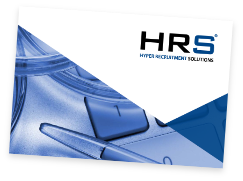What is remote onboarding?
Onboarding is the process of introducing newly-hired employees to their colleagues, explaining their duties, and teaching them about the company's attitudes, processes, vision and goals. This usually happens in the workplace, but if your business uses remote working, the onboarding process must also be conducted remotely.
Remote onboarding is an opportunity for new employees to get used to their new working environment, and a chance for employers to share important information that will help new team members to succeed.
Why remote onboarding can be difficult
According to past studies, the process of onboarding is considered to be one of the most influential factors in an employee's overall experience with your company. Organisations with an effective onboarding regime have been known to achieve more than twice the revenue growth and profit margin of those with poor onboarding programmes. But perfecting the onboarding process isn't easy - especially when everyone is working remotely.
Onboarding requires a high amount of documentation and interaction - something that can feel overwhelming even in a regular office setting, let alone when done remotely.
Below we run through a handful of tips to help make your remote onboarding process as seamless as possible.
Tips for remote onboarding
As a hiring manager, company director or supervisor, it is your job to ensure all new employees feel welcome and have everything they need to be successful in their new role.
In order to achieve this, make sure you...
1. Offer a warm welcome
The very first thing a hiring manager should do for any new employee is send a warm, inviting welcome.
This immediately makes any new starter feel comfortable and will help to ease any nervousness they may be feeling. A warm welcome will reassure the employee that they made the right decision by accepting your job offer and set the tone for all following engagements. Let them know how valued they are to the company right from the off and how excited you are to have them on the team. Encourage other employees to do the same and to make them feel as welcome as possible.
When welcoming a new employee - remotely or otherwise - be sure to fill them in on what they can expect over the coming days, weeks or months, and what you expect from them.
2. Share important documents and information
Once the greetings are out of the way, the next thing to do is to share all the documents and work-related information that the new employee needs.
Create digital versions of key documents, including handbooks, policies, system information, culture handouts, missions and vision statements. This will make it easier to distribute the documents when working remotely.
By reviewing these resources early on, new starters can better understand the company and what is expected of them. This creates a personal connection between yourself and the employee, allowing them to feel more attached to the work you set out for them to do.
3. Get their setup sorted
If any new starter is going to need specific pieces of equipment or software to get going, you need to ensure that these are in place as early as possible. This may be difficult if the new employee is working far away, but it should be one of the very first things on your list as a hiring manager.
First, find out exactly what your new hire needs. If they require a laptop or a monitor, keyboard and mouse to complete the work set out for them, then it's vital to provide these as soon as possible to avoid any delays and a bad start to working life for your new employee.
Make sure all employees are able to communicate with each other easily, whether via email, telephone, or an instant messaging service like Skype or Slack. You should also consider what apps / software your new hire may need to install to get the job done properly.
4. Provide an onboarding plan
When working remotely, it can be quite difficult to forge a real connection with a new workplace. If you're not meeting in a regular office setting, it can hard for all parties to get to know each other on a personal level, and this may leave new starters feeling lost.
To avoid this, you can create a personalised onboarding plan that plots the employee's introduction process to the company. This can include the tasks they will need to tackle and video calls they will need to attend, as well as any mentors or buddies they will be assigned who will act as their first point of contact.
5. Check in regularly
When a new employee starts working for your organisation, it's always better to over-communicate than under-communicate, especially when working remotely. By scheduling regular meetings and check-ins, you will ensure your new hire feels connected and not forgotten.
Schedule regular contact between new employees and their line manager, HR, colleagues and any other members of staff with whom they will be in contact to make them feel like an integrated part of the wider team.
Before each check-in, let your employee know what to expect. This will allow them to prepare their own questions and feedback, giving them an opportunity to voice any concerns and ask important questions.
